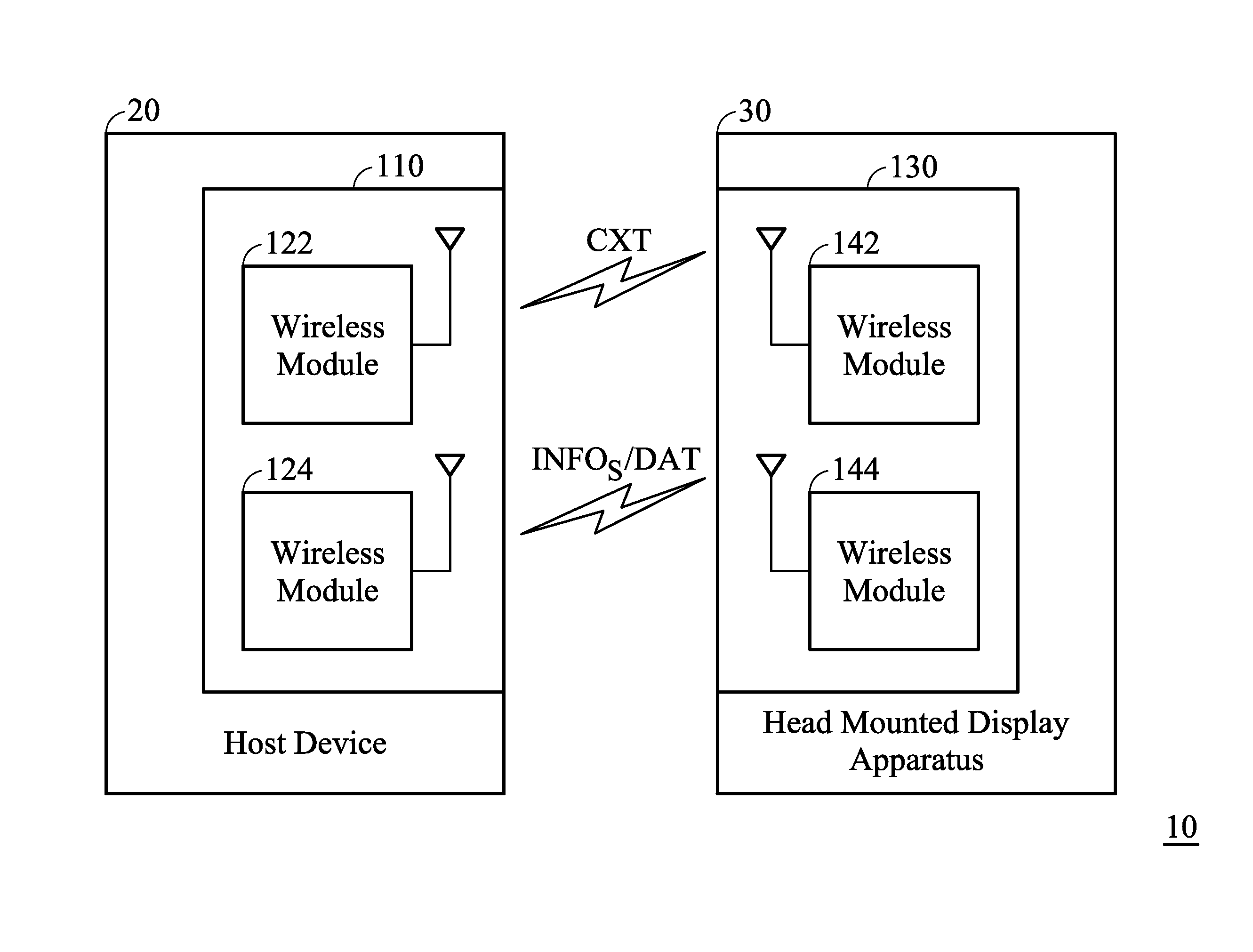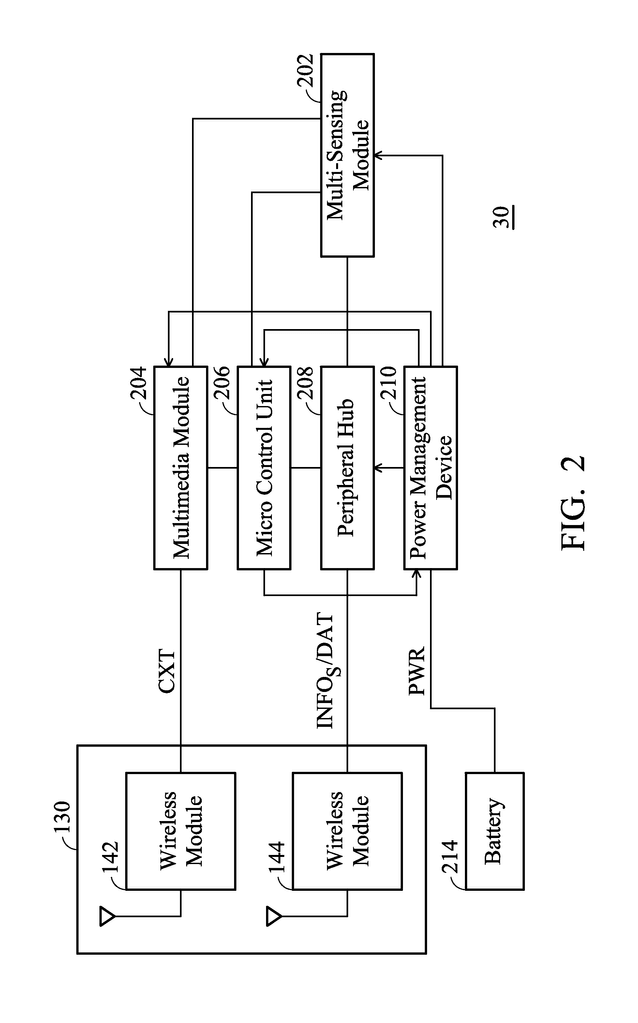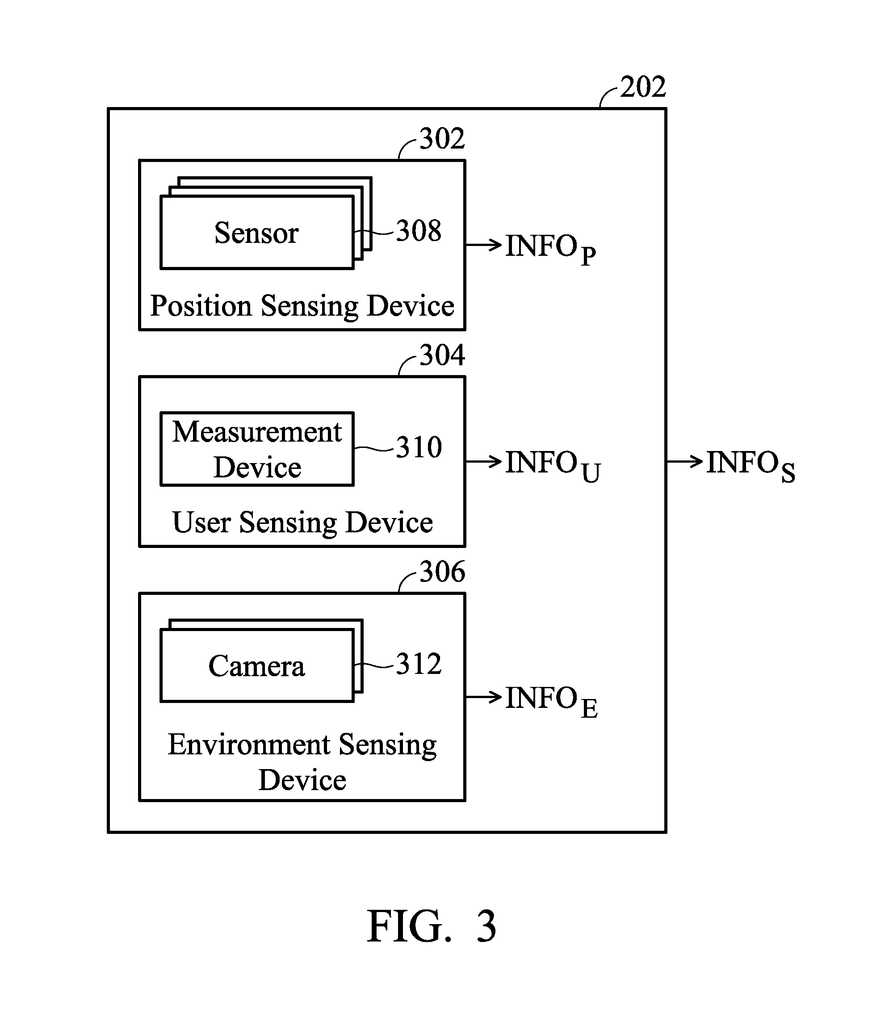Invented by Wei-Chih Chang, Mong-Yu TSENG, HTC Corp
One of the key drivers of the VR market is the gaming industry. VR gaming has gained significant traction, with major players like Sony, Oculus, and HTC releasing VR headsets specifically designed for gaming. These headsets provide a more realistic and immersive gaming experience, allowing players to feel like they are actually inside the game. The demand for VR gaming systems has been steadily increasing, with more and more gamers looking to enhance their gaming experience with VR technology.
Apart from gaming, VR systems are also finding applications in various other industries. The entertainment industry is utilizing VR technology to create immersive experiences for movies, concerts, and theme parks. VR allows users to feel like they are part of the action, enhancing their overall entertainment experience. Additionally, VR is being used in the field of education and training. Virtual classrooms and simulations provide a safe and controlled environment for students and professionals to learn and practice various skills.
The healthcare industry is another sector where VR systems are making a significant impact. VR technology is being used for pain management, rehabilitation, and even surgical training. Virtual reality can help patients distract themselves from pain and discomfort by immersing them in a virtual environment. It can also aid in the recovery process by providing interactive exercises and simulations for physical therapy. Surgeons can also benefit from VR systems, as they can practice complex procedures in a virtual setting before performing them on actual patients.
The market for VR systems is expected to continue growing in the coming years. Technological advancements, such as improved graphics, higher resolution displays, and more realistic haptic feedback, will further enhance the VR experience and attract more consumers. Additionally, the increasing affordability of VR systems is making them more accessible to a wider audience. As the market expands, we can expect to see more innovative applications of VR technology in various industries.
However, there are still challenges that need to be addressed for the VR market to reach its full potential. One of the main challenges is the need for compelling content. While there are already a significant number of VR games and experiences available, there is still a need for more high-quality and engaging content to keep users interested in the long term. Additionally, the issue of motion sickness and discomfort experienced by some users needs to be addressed to ensure a comfortable and enjoyable VR experience for everyone.
In conclusion, the market for VR systems is experiencing rapid growth, driven by advancements in technology and increased consumer interest. The gaming industry, entertainment industry, education sector, healthcare industry, and many others are utilizing VR technology to enhance their offerings and provide users with immersive and interactive experiences. As the market continues to expand and technology improves, we can expect to see even more innovative applications of VR systems in the future.
The HTC Corp invention works as follows
A virtual-reality system is provided.” Virtual reality system comprises a host device, and a head-mounted display apparatus that is worn by the user. The head-mounted display apparatus contains a first wireless, a secondary wireless, a multimedia, multi-sensing, and peripheral hub. The first wireless module transmits multimedia content to the multimedia module. The multi-sensing unit obtains information about the head mounted display and the user. The peripheral hub receives communications data from the host through the second module wireless, and provides sensing information to host device via the second module wireless.
Background for Virtual reality system
Field of Invention
The invention is a virtual-reality system and, more specifically, a head-mounted display apparatus for virtual reality systems.
Description of Related Art
Near-to-eye displays, or display devices that are close to the eye, are frequently used with displays with virtual image generation. These display devices, such as head-mounted displays (HMD), are well known.
HMDs are display devices that people wear on their heads to view video directly in front of their eyes. Near-to-eye displays are another name for HMDs. HMDs have either one or more small LCD or OLED screens with magnifying lenses or other optical elements. Displays and optics can be embedded into a helmet or glasses. To prevent eye strain, lenses and other optical components give the impression that the images come from a distance. In HMDs with a single screen, the image is projected using optics which splits the image into two identical pictures and directs each one to its respective eye. HMDs with two displays can display stereoscopic pictures. The stereoscopic image attempts to simulate the angular differences between the images seen by each eye while looking at an object due to different positions of the two eyes. The angular difference between the images viewed by each eye when looking at an object is one of the main parameters that the brain uses to process images in order to create depth perception in human vision.
Virtual Reality Systems are Provided.” A virtual reality system embodiment is provided. Virtual reality system consists of a host device and a head-mounted display apparatus that is worn by the user. The head-mounted display apparatus consists of a first wireless, a secondary wireless, a multimedia, multi-sensing, and peripheral hub. The first wireless module transmits multimedia content to the multimedia module. The multi-sensing unit obtains information about the head mounted display and the user. The peripheral hub receives communications data from the host through the second module wireless, and provides sensing information to host device via the second module wireless.
Furthermore is also provided another embodiment of a Virtual Reality System. The virtual reality system includes a host device and a transmission cord, as well as a head-mounted display apparatus that is worn by the user. A connection control unit is also connected to the head-mounted display apparatus via the transmission cable. The head-mounted display apparatus consists of a first wireless component, a multimedia component, a multisensory module and a peripheral hub. The first wireless module transmits multimedia content to the multimedia module. The multi-sensing modules obtains information about the head mounted display and the user. The peripheral hub receives the communication data from transmission cable and transmits the sensing information. The connection control module consists of a second wireless device and a power source. The connection control receives communication data from the host through the second wireless device and transmits communication data to head mounted display apparatus via the transmission cable. The connection control receives the sensor information from the head-mounted display apparatus via the transmission cable and sends it to the host device using the second wireless module.
Also, another embodiment is provided of a virtual-reality system. Virtual reality system includes a host device and transmission cable. A head mounted display unit is worn by the user. And a connection controller unit is connected to the head-mounted display apparatus via the transmission cable. The head-mounted display apparatus consists of a multimedia module that obtains multimedia content from a transmission cable. A multi-sensing unit collects sensing data about the head-mounted display apparatus and user. And a peripheral hub that receives communication data from a transmission cable and provides the sensing info to the transmission cord. The connection control module consists of a first wireless, a secondary wireless and a battery. The connection control module receives multimedia content via the first wireless device and transmits it to the head mounted display system through the transmission cable. The connection control receives communication data from host device via the second wireless module and transmits it to the head-mounted display apparatus using the transmission cable. The connection control receives the sensor information from the head-mounted display apparatus via the transmission cable and sends it to the host device using the second wireless module.
The following embodiments are described in detail with the drawings that accompany them.
BRIEF DESCRIPTION DES DRAWINGS
The following detailed description, examples and drawings with reference to the accompanying drawings will help you better understand the invention.
FIG. “FIG.
FIG. “FIG. “1 according to a particular embodiment of the invention
FIG. “FIG. “2 according to a particular embodiment of the invention
FIG. “FIG. “2 according to a particular embodiment of the invention
FIG. “FIG. “1 according to a particular embodiment of the invention
FIG. FIG. “1 according to a particular embodiment of the invention
FIG. “FIG.
FIG. “FIG.
The following description represents the most well-conceived method of carrying out the idea. This description was made to illustrate the general principles and not as a limitation. “The scope of the invention can best be determined by referring to the claims attached.
FIG. “FIG. Virtual reality system 10 includes a host device and a wearable head mounted display 30. A communication module 110 of the host 20 includes a wireless unit 122 that provides a multimedia content (CXT) to the user’s head mounted display device 30 and a second wireless module 124 that transmits the communication data (DAT) to the user’s head mounted display device 30. The head mounted device 30 can play the multimedia content CXT provided by the host device 20 and obtain the sensing data INFOS about the head-mounted display 30 or the person wearing it. The communication unit 130 is composed of a wireless modules 142 and 144. A wireless module receives the multimedia content from the host 20 device and provides the sensing data INFOS. The host device 20 can modulate the multimedia CXT based on the information received by the head-mounted display apparatus 30. In one embodiment, a host device 20 can process a multimedia resource and generate the multimedia content CXT based on the multimedia source as well as the information sensed the head mounted display 30. Note that both the wireless modules 122 and 142 of head mounted display device 30 support the same wireless technologies (e.g. Bluetooth, WiFi, etc. “Bluetooth, WiFi, etc. Bluetooth, WiFi, etc.).
Click here to view the patent on Google Patents.





